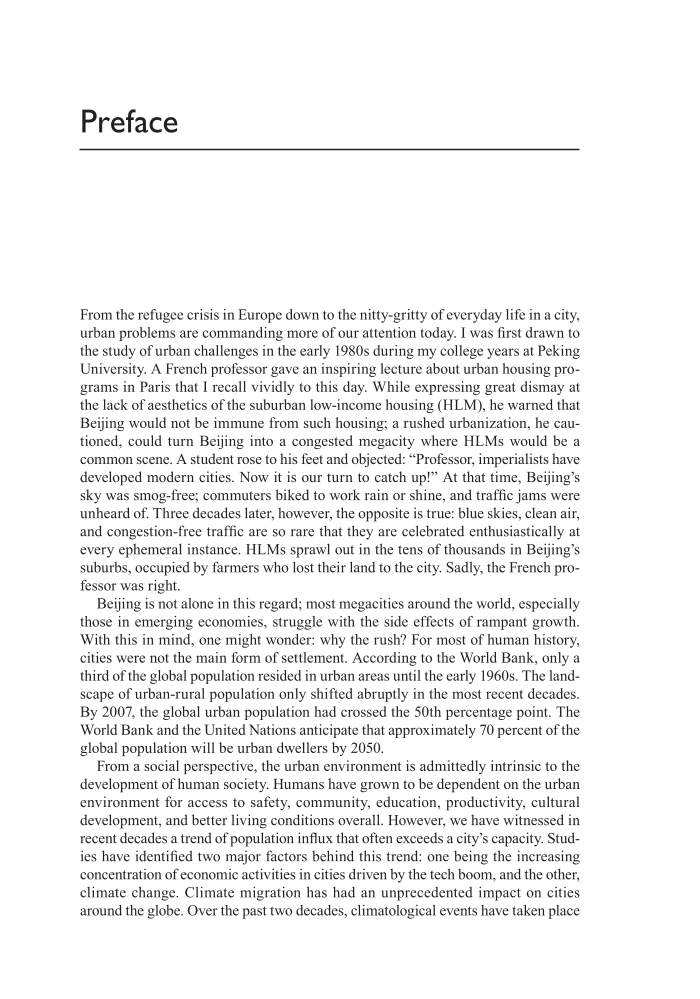Preface From the refugee crisis in Europe down to the nitty-gritty of everyday life in a city, urban prob lems are commanding more of our attention today. I was first drawn to the study of urban challenges in the early 1980s during my college years at Peking University. A French professor gave an inspiring lecture about urban housing pro- grams in Paris that I recall vividly to this day. While expressing great dismay at the lack of aesthetics of the suburban low- income housing (HLM), he warned that Beijing would not be immune from such housing a rushed urbanization, he cau- tioned, could turn Beijing into a congested megacity where HLMs would be a common scene. A student rose to his feet and objected: “Professor, imperialists have developed modern cities. Now it is our turn to catch up!” At that time, Beijing’s sky was smog- free commuters biked to work rain or shine, and traffic jams were unheard of. Three de cades later, however, the opposite is true: blue skies, clean air, and congestion- free traffic are so rare that they are celebrated enthusiastically at every ephemeral instance. HLMs sprawl out in the tens of thousands in Beijing’s suburbs, occupied by farmers who lost their land to the city. Sadly, the French pro- fessor was right. Beijing is not alone in this regard most megacities around the world, especially those in emerging economies, struggle with the side effects of rampant growth. With this in mind, one might wonder: why the rush? For most of human history, cities were not the main form of settlement. According to the World Bank, only a third of the global population resided in urban areas until the early 1960s. The land- scape of urban-rural population only shifted abruptly in the most recent decades. By 2007, the global urban population had crossed the 50th percentage point. The World Bank and the United Nations anticipate that approximately 70 percent of the global population will be urban dwellers by 2050. From a social perspective, the urban environment is admittedly intrinsic to the development of human society. Humans have grown to be dependent on the urban environment for access to safety, community, education, productivity, cultural development, and better living conditions overall. However, we have witnessed in recent de cades a trend of population influx that often exceeds a city’s capacity. Stud- ies have identified two major factors behind this trend: one being the increasing concentration of economic activities in cities driven by the tech boom, and the other, climate change. Climate migration has had an unprecedented impact on cities around the globe. Over the past two de cades, climatological events have taken place
Document Details My Account Print multiple pages
Print
You have printed 0 times in the last 24 hours.
Your print count will reset on at .
You may print 0 more time(s) before then.
You may print a maximum of 0 pages at a time.



















































































































































































































































































































































































































































































































































































































































































